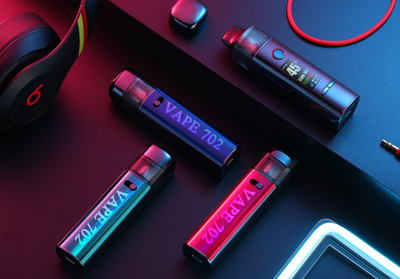for wholesale

Understanding Coil Types and Builds: Unraveling the Secrets of Vape Coils for Vape Distributors
Vape coils are the heart of any vaping device, transforming e-liquid into vapour and delivering the ultimate vaping experience. As a vape distributor, it is essential to understand the intricacies of coil types and builds to guide buyers to coils that suit their vaping preferences. In this in-depth exploration, we will delve into different coil types, their materials, and how they influence the vaping experience, empowering you to provide expert guidance to your clientele.
Understanding Coil Types: The Basics
Vape coils come in various configurations, each designed to offer a unique vaping experience. The two primary types of vape coils are:
Single Coils: The simplest and most common type, single coils provide a straightforward vaping experience with consistent flavour and moderate vapour production. They are suitable for beginners and vapers who prefer a balanced vape.
Dual Coils: Dual coils consist of two coils within the atomizer, doubling the heating surface area. This results in increased vapour production and enhanced flavour. Dual coils are ideal for vapers who desire denser clouds and intense flavour.
Coil Materials: The Building Blocks of Performance
Coil materials play a significant role in determining the performance and characteristics of a vape coil. Common coil materials include:
Kanthal: Kanthal is an iron-chromium-aluminium alloy known for its high resistance and durability. It offers stable performance and is suitable for both single and dual-coil setups.
Nichrome: Nichrome is a combination of an alloy of nickel and chromium, offering faster ramp-up times and lower resistance than Kanthal. Vapers who prefer quick heat-up and responsiveness choose Nichrome coils.
Stainless Steel (SS): Stainless steel coils are versatile, compatible with wattage and temperature control modes. They provide a clean flavour profile and allow for more precise temperature control.
Ni200 (Nickel): Nickel coils are primarily used for temperature control vaping. Due to its low resistance and potential high-temperature sensitivity, Nickel coils should only be used with appropriate temperature control devices.
Coil Builds: Unleashing Customization and Performance
Vape enthusiasts enjoy experimenting with various coil builds, allowing them to customize their experience. Some popular coil builds include:
Standard Coils: Simple and easy-to-build, standard coils feature a single wire wrapped around a rod or screwdriver. They are perfect for beginners and provide a good balance of flavour and vapour production.
Clapton Coils: Clapton coils consist of a thin wire wrapped around a thicker wire, increasing surface area and enhancing vapour production and flavour. They offer a smoother draw and a warmer vape.
Alien Coils: Alien coils feature a Clapton wire with the outer wrap spaced apart. This design provides a more complex surface area, producing even more flavour and vapour.
Fused Clapton Coils: Fused Clapton coils combine multiple Clapton wires, resulting in unparalleled flavour and vapour production. They are favoured by advanced vapers seeking high-performance coils.
Conclusion:
Understanding coil types, materials, and builds is essential for vape distributors to provide expert guidance to their customers. The diverse range of coil options allows vapers to tailor their vaping experience to suit their preferences, whether they desire intense flavour, massive vapour clouds, or a balanced performance. By sharing this knowledge, you can empower your clientele to make informed decisions and unlock the full potential of their vape devices. As a vape distributor, nurturing your customers' understanding of vape coils will lead to greater satisfaction and loyalty within the vaping community. Happy vaping

